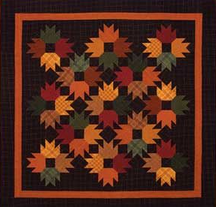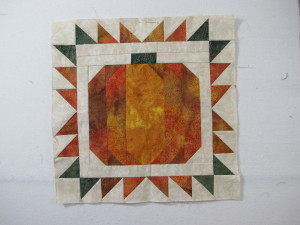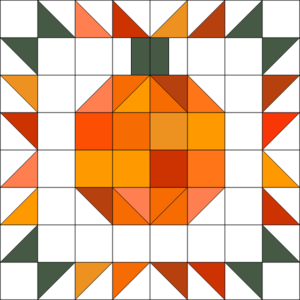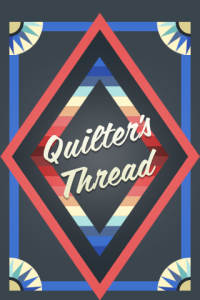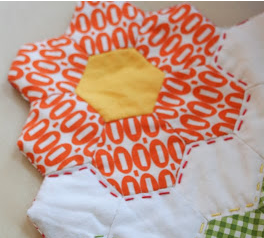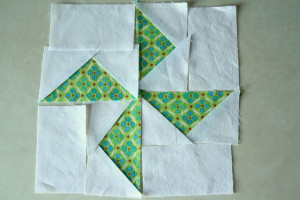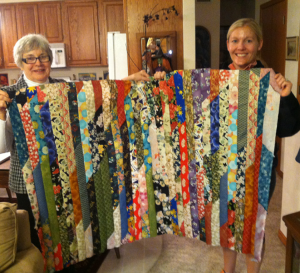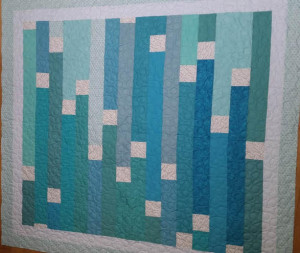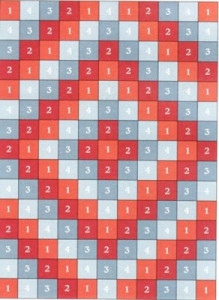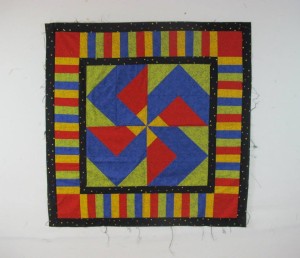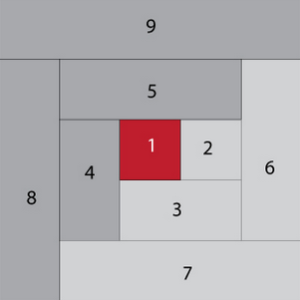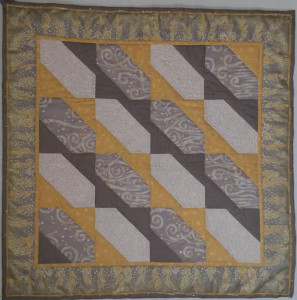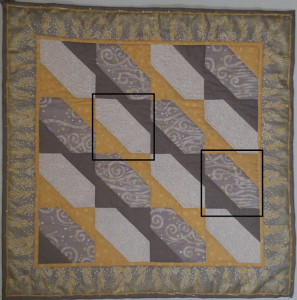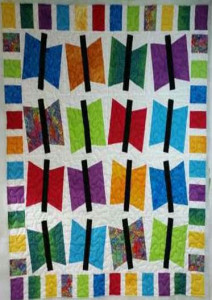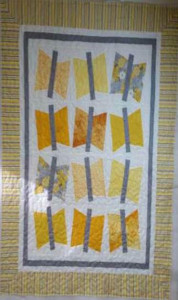Fall is a great season for quilters because the change in season inspires us to make more quilts for friends and family. As the weather starts to fall below sixty degrees there is a need to bundle up and stay warm. There so many traditional themed quilts that are perfect for incorporating fall colors and patterns that give your quilts that extra bulk needed for the cold as well as that extra comforting feeling. So for your next quilt project try making a flannel quilt. Here are two great examples of fall flannel quilts to make this season.
Maple Leaf Pattern Quilt
This autumn themed quilt is another great way to decorate your home this fall with its earthy tones of red, green, orange and yellow that mimic the change of seasons from summer into fall. Having the background of the quilt be a dark brown helps the colored leaves pop-out of the quilt and catch your attention first. For more information about this quilt click here.
This pumpkin rag quilt is a great autumn themed quilt that you can also use for decoration for halloween. This quilt is made out of flannels and is quilted as you go along leaving the edges exposed and are snipped to encourage ravel (i.e. the “rag” look). Snipping the seams for the ravel can really tire your hands after a while. Try using scissors with a more comfortable handle with a short blade to cut. By using that kind of scissors you will put less strain on your hands when cutting. The Fiskars Amplified Mixed Media Scissors can help reduce hand fatigue when cutting.
Tips to making the perfect flannel quilts:
- Always prewash your flannel fabrics before turning them into quilts. This is because when washing flannel, it can shrink differently so it’s best to do so before you actually begin quilting so that you know what to expect with the size of material. Make sure to buy a little bit more than the actual size that you want your flannel fabric to be so that if it does shrink you’ll have enough to make your quilt with the exact measurements.
- Always add a little bit more to the seam allowance because flannel can tend to fall apart more easily than regular fabric quilts. So instead of making the seam 1/4″ try making it bigger about 3/8″ in order to make the seam more durable.
- Use lots of pins when sewing your flannel together in order to hold everything in place. Flannel can be difficult to keep together when making it into a quilt. Also make sure you have extra needles handy. When sewing with flannel your needles can get dull quickly because the fabric is so much thicker than others.
- Be gentle with your flannel when ironing it because flannel does tend to stretch out.
Although using flannel as your main fabric in a quilt can be tricky to make, it is also very rewarding and can last you a life time and you can always count your flannel quilt to keep you warm through the cold winters. Share with us on our mobile app your favorite flannel or fall themed quilt on Quilter’s Thread.
Live well. Quilt well.
